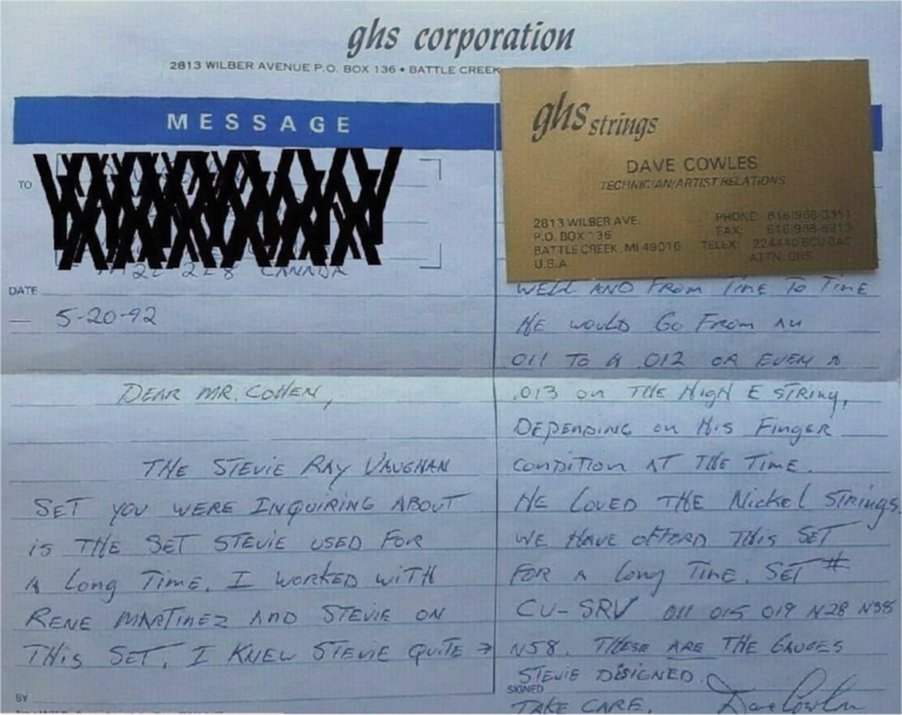
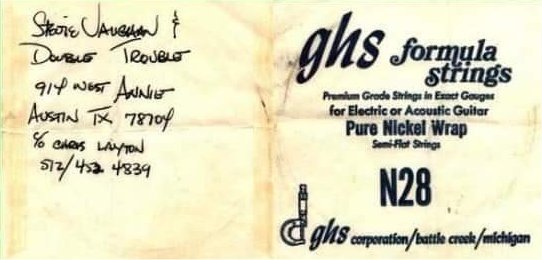
Of course, Stevie had to keep his strings in tune and he and guitar technician Rene Martinez did this with a Conn ST11 Strobotuner (pictured below).
The Strobotuner works on an optical illusion known scientifically as the stroboscopic effect - hence the name "Strobotuner". The stroboscopic effect is responsible for the apparent backward rotation of a vehicle's wheels when clearly the vehicle is moving forward. This same effect causes the wheel to appear to slowly rotate forward or even appear motionless when the vehicle is going very fast.
Charles Gerald Conn, the founder of C. G. Conn Ltd., pioneered highly accurate tuning devices many years ago with the introduction of the Stroboconn. Wide acceptance of the Stroboconn led to the development of the light-weight Strobotuner which for years has been the standard of the industry and used by other guitar players such as Dave Gilmour and Neil Young, and many more.
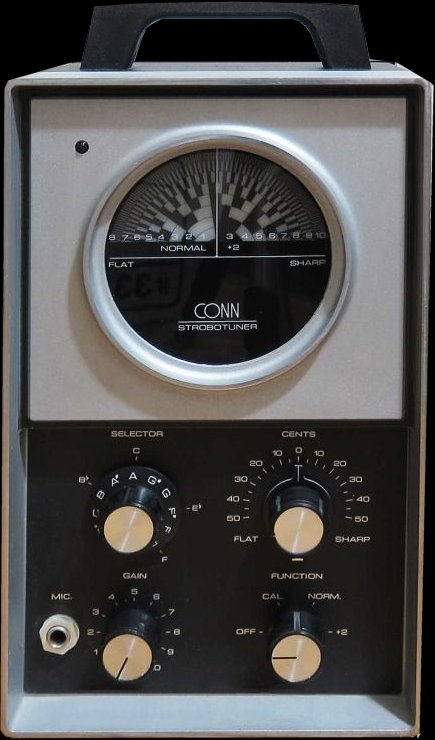
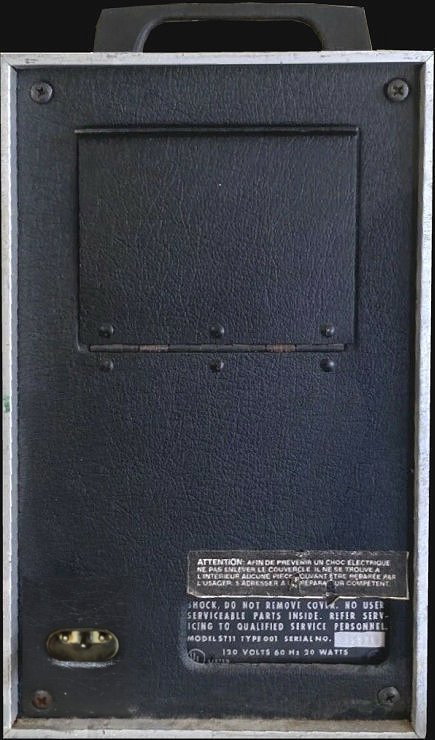
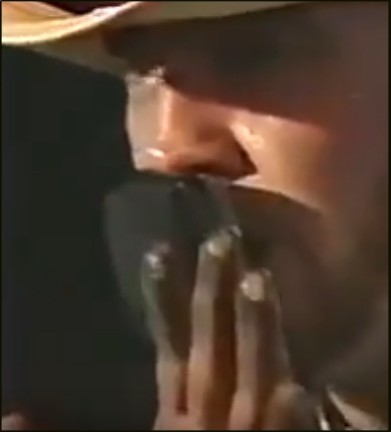
Due to the intensity of Stevie's playing, together with the thickness of his strings, he quite often wore holes in his finger tips and caused them to bleed. These holes could be 1/4 inch deep and so he developed his own way of fixing them.
Firstly he'd fill the holes with baking powder. Then he'd put a layer of super glue over the top of the hole.
Finally, he'd press the finger onto either the palm of his hand, or a finger from the other hand until it stuck. Then he'd pull the finger away and he'd have a new layer of skin over the repair.
He would then use a nail file to file down any rough areas, so they did not catch on the strings.
René Martinez advised Stevie that if he continued doing this, eventually he wouldn't be able to play any more, due to too much damage to his finger tips.
He therefore got some custom strings from GHS in the gauges of .011 - .015 - .019 - .028 - .038 - .058 and Stevie started to use these.
(information from Texas Flood - The Inside Story of Stevie Ray Vaughan, by Alan Paul and Andy Aledort) and the following interview: https://www.youtube.com/watch?v=5SgnHUTn52M